As a fourth-generation weaver, Sunil Das, 55, cannot remember a time he was not surrounded by silk sarees. Now, he is tired. He bears many burdens: of low wages in the fast-dwindling market for handwoven sarees that often cost 10 times a silk, the rising costs of raw material, and the social stigma of belonging to the tanti or weaving community, classified by the Indian government under the Extremely Backward Classes. Das lives in Bhagalpur town, once called the Silk City of Bihar, situated on the banks of the Ganga. The district with the same name, in Bihar’s southernmost area, has 1,689 villages and a population of over 30 lakh, as per the 2011 Census. The sleepy town is also a centre of Manjusha painting, the green-pink-yellow hues depicting stories of the adopted daughters of Shiva and Parvati.
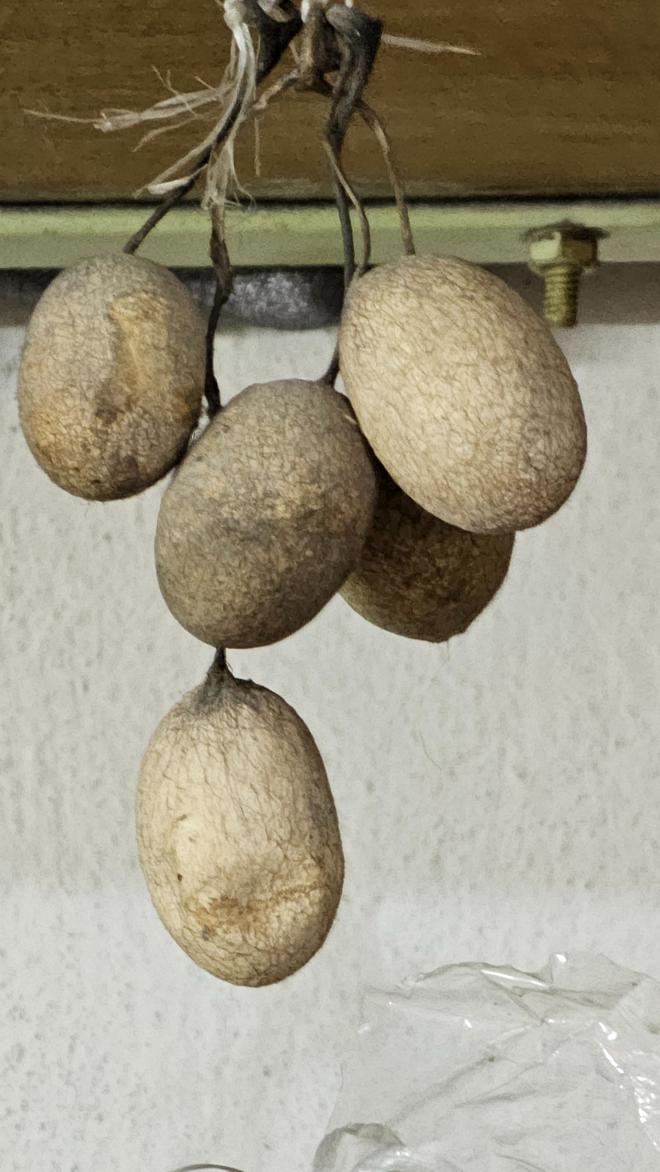
The Bhagalpur Regional Handloom Weavers Co-operative Union, a 25-year-old organisation, records the business of silk handlooms in the area. “Five years ago, there were about 2 lakh weavers in Bhagalpur; now there are 60,000,” says Javed Saleh Ansari, 65, chairperson of the cooperative union. Soaring yarn price dwindled the business down from ₹600 crore per annum in 2015 to its current ₹150 crore, he says.
“I don’t know any other work. But if I don’t work, what will I feed my family? There was a time we would get bulk orders and good money,” says Das, as he weaves a saree of tussar, a wild silk of central India, the cocoons of which were traditionally foraged by tribes. It will take him two days to finish the natural brown-gold 6.5 metres.
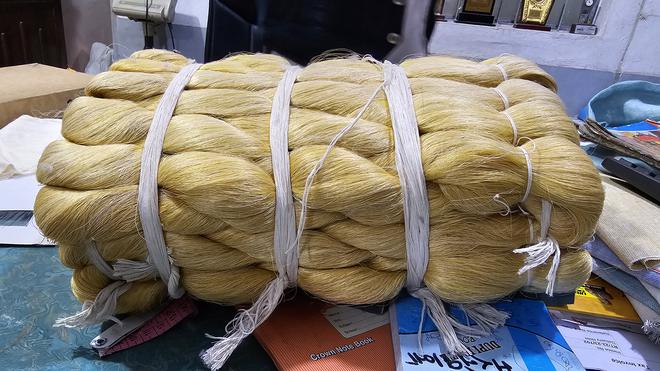
Silence of the looms
Das uses a traditional pitloom, where the weaver sits on the ground, feet in a pit, with the loom at ground level, so that adequate force can be applied while weaving with a fly shuttle. He manages to make just about ₹200-250 per day, on a loom owned by Subodh Kumar, 40, a fellow weaver. He comes to Kumar’s house daily, walking the 2 km every morning, and working through the day.
Pinky Devi, 38, Kumar’s wife, helps him by rolling the yarn used. Five years ago, Kumar’s family had four pitlooms at home; now they operate only two. It has become hard to find weavers; most have migrated to powerlooms or simply left the profession behind. “When two looms were closed, I decided to help my husband. I finish the kitchen work and other chores early in the morning. After 12 noon, I start spinning the yarn. The more I spin, the more fabric can be woven,” Devi says, at her exposed brick home that is also their place of work. The family’s monthly income ranges between ₹5,000 and ₹6,000. They still remember the slowdown during the pandemic, from which they are still recovering.
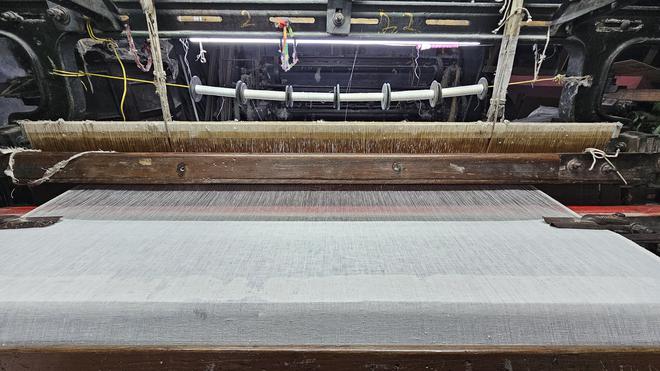
Five years ago, a kg of tussar silk thread was available at ₹3,000; now it costs ₹75,000. Similarly, eri silk, another wild silk from northeast India, that has the look and feel of cotton, was at ₹1,000, but is now ₹5,000. Mulberry silk, produced through sericulture, now costs ₹21,000 per kg, up from ₹10,000; while muga silk, from Assam’s Brahmaputra valley, is at ₹8,500, previously ₹4,000.
About 10 or 12 years ago, traders would buy cocoons from Jharkhand and Chhattisgarh to process the yarn over a couple of days, unwinding filaments from cocoons, drying, boiling, and reeling the thread. Now, the yarn comes from cities like Surat, Ahmedabad, Bengaluru, and Kolkata, indicating a shift from the traditional value chain, where production took place within the central India landscape. Often, they warp the Korean or Chinese mulberry silk, with the weft being locally produced.
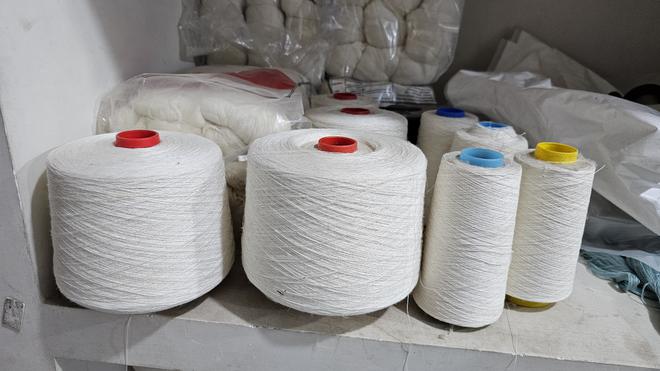
In 2013, Bhagalpur silk got the government’s geographical indications (GI) tag, protecting both the quality and distinctiveness of the product. “For a certification to be provided, the traditional process must be maintained, both in terms of sourcing materials and the way it is woven,” says Sandeep Kumar, deputy director of the Weavers’ Service Centre in Bhagalpur, a 50-year-old organisation under the Ministry of Textiles. There are about 1,000 weavers who have the GI certificates.
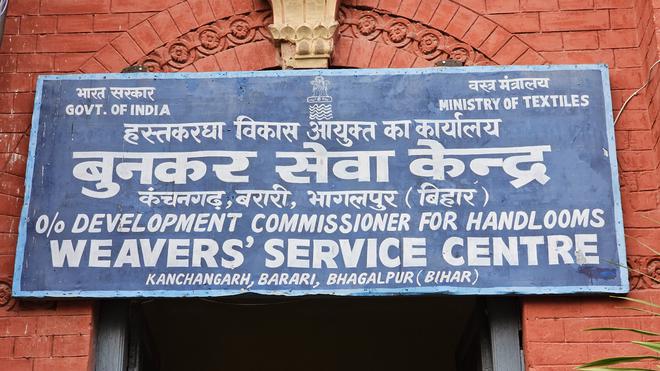
Broken chains
Bimal Kumar, 48, a powerloom owner, asserts that there was no profit in the handloom silk business, so he shifted to cotton and linen. “We hardly get any bulk buyers in Bhagalpur,” Kumar says. Many weavers — about 60% are Muslim — have stopped weaving.
Nazish Ahmad, 42, shifted to construction, about a decade ago. “My father used to be a silk weaver, but there was no profit. There is no government support to expand the silk cluster, so we decided to close,” says Ahmad, who himself has only dabbled in weaving. Traditionally, every process of the value chain, from farming to weaving, was within a concentrated geographical area that formed a cluster. Today, there is a differentiation between, say, a farming and a weaving cluster.
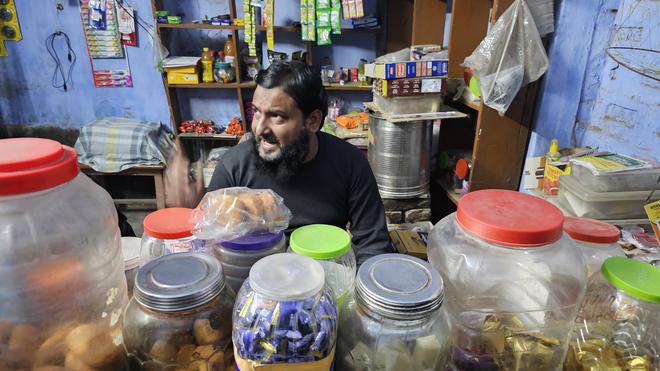
Abid Ansari, 50, another weaver, opened a grocery shop four years ago. “I used to earn ₹8,000 to ₹10,000 a month, which was not enough for a five-member family. My three children are studying in private schools, and I was not able to pay their fees. Now, I earn ₹15,000 to ₹20,000 a month,” Ansari says.
In 2022, Bihar Chief Minister Nitish Kumar had announced on National Handloom Day that an integrated weavers’ development scheme would be launched for weavers, which would bundle several benefits into one, so separate paperwork wouldn’t have to be processed for different schemes. Nothing has come of this yet.
From 2017, the Satrangi Chadar Yojana, under which handloom bedsheets in seven colours (one for each day of the week) began to be sourced from weavers of cotton cloth for government hospitals and medical colleges. However, there had been no benefit for silk weavers. This scheme, too, collapsed after 2020, when private players began the supply of bedsheets.
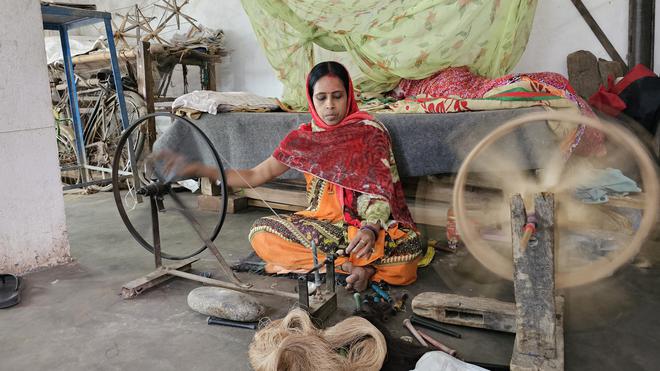
The drift away
“We expected the next generation to learn silk weaving, but seeing our difficulties, our children don’t want to,” says Javed, sitting in his house with the khat-khat of looms at work. One of his sons has migrated to Mumbai to run a carpet business; his other son is a weaver who owns about 10 powerlooms, the 70% electricity subsidy benefiting him. “Today, we are labourers, not craftspeople, for big traders. The import of silk from China and Korea has badly affected weavers,” he says, adding that thousands of people used to be involved in separating silk thread from cocoons. “They are now migrants to other States, daily wagers, mostly in construction.” Another problem is the fluctuating rate of silk in the market. “It feels like the share market,” says Javed.
In 1989, communal riots in Bhagalpur claimed the lives of nearly 1,000 people, with 50,000 displaced, across 250 villages, according to the Justice N.N. Singh Inquiry Commission report. It destroyed thousands of handlooms, mostly belonging to the Muslim community. Hasnain Ansari, president of the Abdul Qayyum Bunkar Manch, an organisation working towards training and rehabilitating weavers in Bhagalpur, says the community never recovered from the physical and social trauma of the riots. “That’s when the real downfall took place. Around 70% of the handlooms were destroyed, and even powerlooms were affected. Only the weavers in rural areas were safe, but those in the town were badly affected,” says Hasnain.
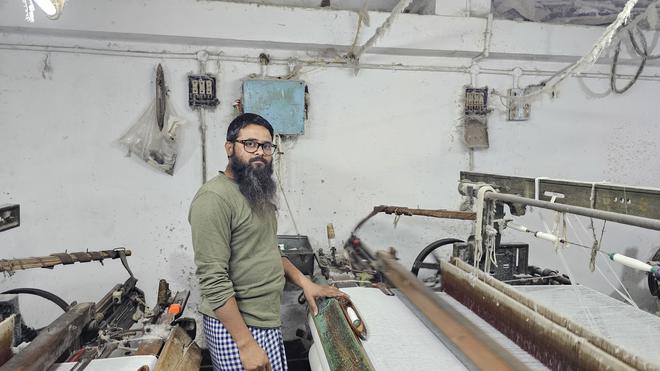
Of the few who did recover is Tahsin Shalab, 31, from Nargah locality, whose parents managed to get him a good education. With an MBA degree from Delhi, he runs the business by directly dealing with companies. “My father never wanted me to be a weaver, because of all the difficulties, but I insisted. This is our identity. I do some silk, but the bulk of the profit comes from cotton, polyester, and linen. You cannot make out the difference between a pure silk and polyester sari,” he says, adding that while a silk sari costs ₹5,000, a polyester one will cost ₹500. He feels what’s missing is marketing support, with the monopoly of big traders being a problem.
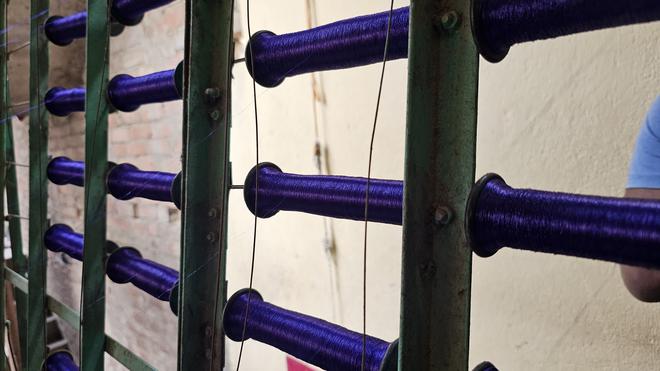
Officers at the Weavers’ Service Centre claim that weavers have no difficulties, and that the Ministry is giving them ample support. “We serve weavers through the National Handloom Development Programme [aimed at providing raw material, design inputs, technology upgradation]. We provide loom accessories and training, apart from arranging buyer-seller meets,” says Prabhat Singh, one of the officers working there. He says they recommend the names of prominent weavers in the community for handloom expositions at the State and national levels. “We have the Samarth Scheme, a skilling programme. I don’t think that the silk industry is going down,” he says, sitting on a plastic chair in the decrepit building almost overtaken by wild undergrowth around.







